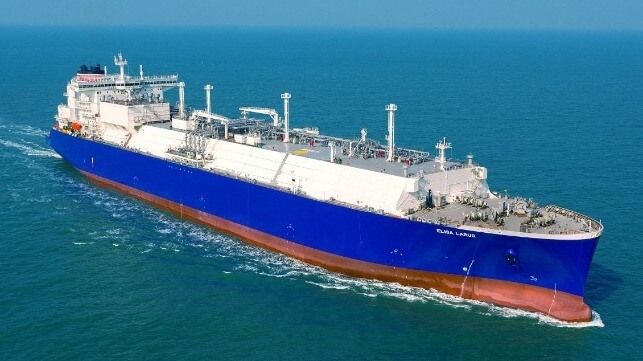Shell and GTT Working to Develop Mid-Size Liquid Hydrogen Carriers

The maritime group with energy major Shell and container system designer GTT are partnering to become the latest entrants in the race to develop vessels to transport liquid hydrogen. They will compete with efforts in Japan and South Korea also seeking to build hydrogen carriers, including a first demonstration being led by a Japanese partnership with Kawasaki. The goal of the program is to develop the technologies to enable the transportation of liquid hydrogen (LH2) in mid-size carriers.
Anticipated to be one of the primary energy sources of the future, multiple projects have been working to develop the containment and handling systems that will be necessary for the shipment of hydrogen. The first successful demonstration project is underway with the Hydrogen Energy Supply Chain pilot project (HESC) organized between Japan and Australia. Kawasaki built a small vessel, the Suiso Frontier, which arrived in Australia in mid-January and loaded the first large quantity of liquid hydrogen to be shipped internationally. The vessel is expected to reach Japan in late February with the hydrogen shipment and the data developed will be used to advance future developments in hydrogen shipping.
Both Korea Shipbuilding & Offshore Engineering Co. and Japan’s Kawasaki Heavy Industries have also been working on designs and technology for the shipment of large quantities of liquid hydrogen. Kawasaki reported in May 2021 that it had received an Approval in Principle (AiP) from ClassNK for a cargo containment system for a large liquefied hydrogen carrier and forecast that they could have a commercial vessel ready by the mid-2020s. At the same time, KSOE is working with the Korean Register of Shipping to develop what they believe will be the first set of safety standards for hydrogen-fueled ships. The Korean effort, which includes the Korea Research Institute of Ships & Ocean Engineering (KRISO), Hylium Industries, POSCO, and Korea Shipbuilding and Offshore Engineering working with the Korean Register of Shipping, reported in January 2022 that they had obtained two AIP certifications for the design of liquid hydrogen fuel tanks for ships.
The new cooperation between Shell and GTT seeks to leverage GTT’s more than 50-year track record and experience in membrane containment systems and cryogenic technologies developed for the shipping and storage of LNG. The goal is to use the experience with current gas carriers to develop an optimal containment solution that can be used on an industrial scale for the maritime transport of liquefied hydrogen.
"We are particularly proud to combine our expertise and innovation capabilities with those of Shell on this very promising project,” said Philippe Berterottière, Chairman and CEO of GTT. “Our cooperation will allow a new technological breakthrough in the shipping world with the safe and scalable deployment of liquid hydrogen transport. GTT R&D teams are particularly determined to push back technological frontiers and making decarbonization a reality.”
The ability to transport very large volumes of hydrogen in liquefied form, at -250°C, is one of the technological challenges that they will need to address. Developing the transportation and infrastructure systems is key to establishing a reliable, efficient, and competitive hydrogen supply chain, notes Shell.
The effort is part of Shell's strategy to develop a hydrogen energy supply chain by creating scalable and safe liquefied hydrogen shipping technologies.
